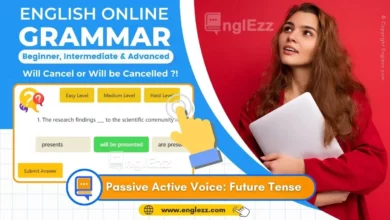In the vast realm of digital landscapes, search engines have transformed from mere keyword matchmakers to sophisticated semantic wizards, bringing forth a new era of exploration and discovery. By delving into the depths of semantic search and natural language processing, we unlock a treasure trove of possibilities that revolutionize how we interact with information online.
Imagine a world where search engines comprehend not just our words but our intentions, nuances, and context – welcome to the realm of Semantic Search and Natural Language Understanding (NLU).
Table of Contents
- Semantic Search and Natural Language Understanding: Bridging the Gap
- Understanding Semantic Search
- Natural Language Processing (NLP)
- The Power of Context in Search
- Enhancing User Experience with Semantic SEO
- The Future Trends in Natural Language Understanding
- Embracing Semantic Search for Enhanced Engagement
- Conclusion:
- FAQs: Unlocking Insights on Semantic Search & NLU
Semantic Search and Natural Language Understanding: Bridging the Gap
The journey from static keywords to dynamic semantics marks a pivotal shift in how we navigate the digital domain. As search engines evolve to decipher meanings rather than just strings of characters, the harmony between contextual relevance and user intent emerges as a beacon guiding us through the vast expanse of data. In this age where conversations with machines feel increasingly human-like, understanding the power of NLP becomes paramount.

The marriage between semantic search and NLP isn’t merely about decoding queries; it’s about fostering deep connections between users and content in an ever-expanding universe of digital knowledge. Let’s embark on this quest together – uncovering the secrets that lie at the nexus of semantic intelligence and linguistic comprehension.
Understanding Semantic Search
Semantic search represents a significant shift in the way search engines process queries, moving beyond traditional keyword matching to understand the intent behind users’ search terms. In essence, semantic search aims to grasp the context and meaning of words within a query rather than simply looking for exact keyword matches. By delving into the semantics of language, search engines can provide more relevant results that align with what users are truly seeking. This evolution in search technology is driven by the need to enhance user experience and deliver more precise information promptly.
One of the key benefits of semantic search is its ability to improve search accuracy by interpreting the nuances of language.
- For example, when a user types in “best Italian restaurants near me,” semantic search algorithms not only consider keywords like “Italian” and “restaurants” but also take into account location data and user preferences to offer personalized recommendations.
This level of understanding leads to more tailored results that cater to individual needs, ultimately enhancing the overall user experience.
Semantic search extends far beyond traditional web searches and is prominently featured in voice assistants like Siri and Alexa. These virtual assistants rely on natural language processing (NLP) capabilities to comprehend spoken queries and provide relevant answers or complete tasks for users. By integrating semantic understanding into voice-enabled devices, these technologies can engage in human-like interactions, making them invaluable tools for everyday tasks ranging from setting reminders to researching information on-the-go.
In everyday life, semantic search has permeated various aspects of technology, from predictive text suggestions on smartphones to recommendation systems on streaming platforms like Netflix. These applications leverage semantic technologies to anticipate user needs and preferences, offering a seamless and intuitive experience. As semantic search continues to advance, its impact on improving efficiency and personalization across digital platforms will undoubtedly shape the way we interact with technology in the future.
Natural Language Processing (NLP)
Natural Language Processing serves as the backbone of understanding human language in the digital realm. Using algorithms and machine learning techniques, NLP enables machines to interpret and generate human language, bridging the communication gap between people and computers. In industries like customer service, NLP plays a pivotal role in powering chatbots that can interact with users conversationally, providing instant assistance without human intervention.
- For instance, companies use NLP-powered chatbots on their websites to offer real-time support to customers seeking information or assistance with products or services.
The influence of NLP extends beyond customer service into the realm of SEO strategies and content optimization. By leveraging NLP technologies, marketers can gain insights into user intent through analyzing natural language patterns in search queries. This empowers businesses to tailor their content more effectively to match what users are searching for. For example, Google’s BERT algorithm utilizes NLP to understand the context behind search queries better, ensuring that search results are more relevant and accurate for users.
In essence, NLP revolutionizes how businesses understand and engage with their audience by deciphering the nuances of human language. As technology advances and NLP continues to evolve, its implications for SEO strategies become increasingly significant. Optimizing website content using NLP-driven insights not only enhances search engine rankings but also improves overall user experience by delivering content that aligns more closely with what users are looking for. Embracing NLP allows businesses to stay ahead in the digital landscape by connecting meaningfully with their target audience through tailored messaging and optimized content.
The Power of Context in Search
In the realm of search engines, where keywords once reigned supreme, context now emerges as a pivotal player in determining search result relevance. Understanding the context behind a user’s query has become essential for providing tailored and accurate information. Imagine searching for “apple” – without context, it could refer to the fruit, the technology giant, or even a record label. Search engines now aim to decipher intent through context to deliver more relevant results.
Instead of fixating on traditional keyword strategies, focus on entities – which are specific persons, places, or things that your content revolves around. By optimizing for entities through structured data markup and clear content organization, search engines can better comprehend your content’s context. For instance, if you run a local bakery business, ensure that all relevant information about your business like location, operating hours, and menu items is structured in a way that search engines can easily interpret.
To leverage context effectively, search engines employ latent semantic indexing (LSI), a mathematical method used to determine the relationship between terms and concepts in content. By analyzing patterns within texts, LSI helps search engines understand the connection between words and phrases to provide users with more meaningful search results.
- For instance, when someone searches for “best Italian restaurants,” LSI helps search engines recognize related terms like “pasta,” “pizza,” and “gelato” to refine and customize results based on contextual understanding.
For content creators aiming to enhance visibility and engage audiences effectively, aligning with contextual relevance is crucial. Creating content that not only incorporates primary keywords but also relates them naturally to associated topics can improve search engine rankings. By understanding user intent and weaving related concepts into their content seamlessly, creators can optimize for contextual relevance and increase chances of being surfaced by search algorithms for relevant queries.
Enhancing User Experience with Semantic SEO
In the digital realm where user experience reigns supreme, integrating semantic SEO into overall marketing strategies has become not just beneficial but essential. By understanding how machines comprehend content through semantics, marketers can target relevant audiences more effectively. Through the deployment of semantic keywords and entities, businesses can align their content with user intent and provide more personalized experiences.
- For instance, a local bakery implementing semantic SEO could utilize terms like “freshly baked pastries near me” to attract nearby customers actively seeking such products.
Optimizing content using semantic elements goes beyond traditional keyword stuffing. By incorporating related terms and concepts that add context to the content, websites can rank higher in search engine results pages (SERPs) and generate more organic traffic. An example of a successful integration of semantic SEO is seen in e-commerce platforms; by including additional information about product features, reviews, or comparisons using structured data markup language, these platforms enhance their visibility to potential buyers searching for specific products or details.
Case studies serve as concrete evidence of the benefits derived from implementing semantic SEO techniques. Take for example a travel website that switched from focusing solely on generic travel terms to incorporating location-based semantics in their content strategy. This shift not only increased their visibility among users looking for specific destinations but also boosted engagement metrics such as time on page and conversion rates. Such success stories underline how harnessing the power of semantic search optimization can significantly elevate user experience and drive meaningful results for businesses across various industries.
The Future Trends in Natural Language Understanding
As technology continues to evolve rapidly, the future trends in natural language understanding (NLU) hold immense potential to revolutionize digital interactions across various industries. One significant advancement is the integration of voice search with NLU, enabling users to interact with devices using natural speech patterns more seamlessly.
This convergence has widespread implications, particularly in enhancing user accessibility and convenience. Imagine a world where individuals can effortlessly communicate with devices through voice commands for tasks ranging from information retrieval to task execution, transforming the way we interact with technology daily.
Furthermore, advancements in sentiment analysis within NLU are poised to refine customer insights and experiences drastically. By analyzing not just what is being said but also how it is expressed, businesses can gauge customer satisfaction levels more accurately.
- For instance, in the realm of customer service, NLU-powered sentiment analysis can help companies proactively address issues, ultimately improving overall customer satisfaction and loyalty.
This innovative application demonstrates how NLU goes beyond mere comprehension of language to deciphering emotions and sentiments—a pivotal development shaping future digital interactions.
Looking ahead, the fusion of augmented reality (AR) with NLU presents exciting possibilities for immersive user experiences. Picture a scenario where AR glasses equipped with sophisticated NLU capabilities provide real-time translation of foreign languages or offer contextual information based on surroundings. This integration has profound implications not only for tourism but also for sectors like education and healthcare by offering personalized experiences tailored to individual needs.
Thus, the synergy between AR technology and advanced NLU opens new avenues for interactive and enriching digital engagements that transcend traditional boundaries.

In conclusion, the future trends in natural language understanding are set to redefine how individuals engage with technology and each other in a digitally driven world. From enhanced voice search capabilities to nuanced sentiment analysis and immersive AR integrations, these advancements promise a more intuitive and personalized user experience across diverse industries. Embracing these trends heralds a new era of digital interactions characterized by seamless communication, deeper insights into human sentiments, and enriched user experiences that cater to evolving needs effectively.
Embracing Semantic Search for Enhanced Engagement
As we peer into the future of search engines and digital interactions, one thing is clear – semantic search and natural language understanding (NLU) are not just buzzwords but the cornerstone of a more intuitive and personalized online experience. The journey from traditional keyword-based searches to semantic search has revolutionized how users interact with information on the web. Understanding the power of context, language nuances, and user intent has become paramount in ensuring that search results are not just relevant but also meaningful to users.
Understanding user intent is crucial in the era of semantic search. Instead of stuffing your content with keywords, tailor it to address what users want to achieve when searching for information related to your niche. By creating content that directly caters to user intent – whether it’s informational, transactional, or navigational – you not only enhance your chances of ranking higher in search results but also provide more value to your audience. For example, if you’re a travel blogger writing about “best budget-friendly destinations,” make sure to include practical tips and affordable recommendations that align with users’ intentions.
For tech enthusiasts, marketers, and SEO professionals, embracing semantic search is no longer an option but a necessity in staying ahead in the digital landscape. By aligning content strategies with semantic keywords and entities, businesses can enhance their visibility and engage audiences more effectively. Consider a scenario where a user converses with a voice assistant like Google Assistant or Amazon Alexa – these interactions rely heavily on semantic understanding to provide accurate responses. This level of sophistication in processing natural language is transforming how brands interact with consumers, making it imperative for professionals to incorporate semantic SEO techniques into their practices.
The evolving nature of NLU technology presents exciting opportunities for industries across the board. From chatbots offering personalized customer service based on NLP algorithms to predictive text analysis enhancing user experience on websites, the impact of semantic search and NLU is pervasive. With advancements in artificial intelligence paving the way for more nuanced conversations between humans and machines, the possibilities are endless.
By adapting to these changes early on, organizations can not only improve their online presence but also build lasting relationships with their target audience through meaningful interactions backed by semantic understanding.
In conclusion, as we navigate this era of rapid technological advancements, it is crucial for professionals to recognize the significance of semantic search and NLU in shaping the digital landscape. By harnessing the power of context, language processing capabilities, and strategic optimization techniques, businesses can unlock new avenues for enhanced engagement with their customers. Embracing these technologies will not only future-proof marketing strategies but also redefine how we communicate in the ever-evolving realm of cyberspace. It’s time to bridge the gap between keywords and contexts and embark on a journey towards more immersive digital experiences powered by semantic understanding.
Conclusion:
In this journey from keyword-based search engines to the advanced semantic search and natural language understanding we stand at today, it’s evident that technology is continuously evolving to meet our needs for information retrieval. Semantic search has not only transformed how we search online but also how content creators strategize their digital presence. By leveraging the power of context and understanding human language in a more nuanced way, semantic search has brought us closer to intuitive interactions with machines.
The landscape of search engines and natural language processing technologies is ever-evolving. To stay ahead of the curve, continuously educate yourself on emerging trends and experiment with new strategies that align with semantic search principles. Keep an eye on industry updates, attend webinars or workshops focused on NLP advancements, and don’t hesitate to test new techniques in your SEO campaigns. By staying informed and adaptive to change, you can harness the full potential of semantic search and natural language understanding in your digital endeavors.
As we navigate through the intricacies of semantic SEO and the potential of natural language processing, it becomes clear that staying ahead in the digital landscape requires embracing these technologies wholeheartedly. For tech enthusiasts, SEO professionals, marketers, and content creators, adapting to semantic search is not just an option; it’s a necessity for ensuring visibility and relevance in an increasingly competitive online world.
Throughout this article, we’ve explored the significance of semantic search and natural language understanding in redefining our digital experiences. Let’s continue to unlock the secrets of semantic search and NLU, shaping a future where interaction with technology feels more natural and personalized than ever before.
FAQs: Unlocking Insights on Semantic Search & NLU
Q: How does semantic search differ from traditional keyword-based searches?
A: Semantic search focuses on understanding user intent by considering context and meaning behind words rather than just matching keywords.
Q: Can businesses benefit from implementing semantic SEO strategies?
A: Absolutely! By optimizing content for entities and context rather than just keywords, businesses can enhance user experience, improve visibility, and stay ahead in search engine rankings.
Q: What role does natural language processing play in customer service?
A: NLP allows companies to automate conversations with customers through chatbots or virtual assistants, providing quick responses tailored to individual queries.
Q: Will natural language understanding impact voice search significantly?
A: Yes, as NLU advances further, voice searches will become more intuitive and accurate due to systems better comprehending human speech patterns.
Q: Is it necessary for all industries to adapt to semantic search techniques?
A: While some sectors may benefit more directly from embracing semantic technologies like AI-powered chatbots or enhanced SEO strategies, overall adoption can lead to improved user engagement across various fields.








